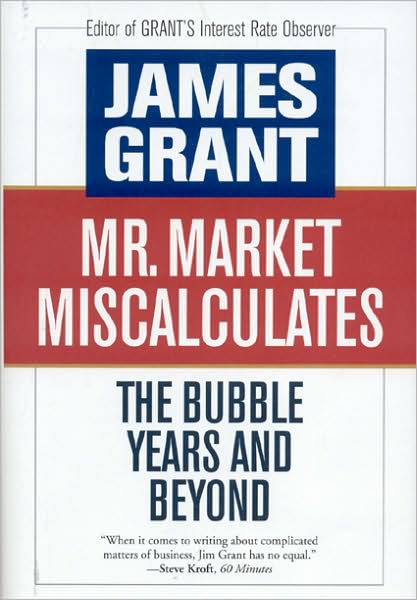On Life Settlements
Well, thank you Rolfe Winkler and Reuters.? I go off-line on Sundays because it is the Sabbath, so I don’t review the web or catch e-mail, but when Rolfe e-mailed me and I saw it on Monday morning, I felt I had to give him a response.
Now, my response was a brief one, for me.? There was more to say, some of it of a personal nature, but I was busy this weekend.? We moved six of our children into different rooms, repainted two of them, and simplified our lives — I have more trash sitting outside than I have ever seen in my life.? The house is simpler and prettier than ever before, and our two oldest now both have their own rooms.
So, what I wrote was significant, but limited.? Let me fill in some gaps.
First, the efforts on life settlements have been going on for a long time.? This is not new, but has been happening for a little less than 20 years.? Over the last ten years I have been personally invited to be a part of three (maybe more) of these enterprises, and I have turned them all down early because of the ethical issues involved.? I genuinely believe in the concept of insurable interest.
Second, life insurance is for the most part sold, not bought.? I used to have trouble with that, but there are many people who will not save or seek protection unless someone goads them to do so.? Those who will not actively look out for themselves pay a price relative to those who seek coverage unbidden.
Surrender charges exist on life insurance policies to allow insurers to recover the cost of the commission that they have not amortized.? As GAAP accounting would suggest, all revenues and expenses are spread over the life of the policies.? The significant cost of acquiring a life insurance policygets recovered over the life of the policy.? If a policy owner wants to surrender early, the insurance company has a surrender value or cash value that reflects no loss to the insurer on average.
Pretend for a moment that you are a life insurer.? You want to make a profit, or if a mutual, break even.? You test/underwrite potential insured lives before the policy is issued to assign policies to the proper rating class for them.? The more accurate you are, the more polices you will write, and the fewer surrenders you will have.? But over time, people change.? After issue, insureds tend to get more sloppy in their lives, on average.? Also, things that could never have been caught in underwriting emerge.
Those doing life settlements aim at the policies where there have been negative health events since issue.? Death is considerably more likely, and so the value of the policy is worth more.
Think about it: you as the insurance company did your best job to estimate the risk involved. You did it assuming that policies could not be sold, whether really or synthetically.? You already knew that those who were healthy in the future would surrender and seek another carrier, but thought the those who were less healthy would persist to some degree.? Well, with life settlements, the unhealthy persist at a much higher level, which bites into profits.
This is the box that life insurers are in.? They can’t lock in policyholders, but policyholders can hang on, refinance (so to speak), or sell off their obligations.? That is a tough equation for life insurers to work through, and to the degree that life settlements are allowed, premiums will have to rise to compensate for the loss of profitability.






